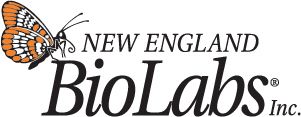 |
Experience is one thing you can't get for nothing. |
Home
Lab Resources
- Agarose Gel Electrophoresis
- Bacterial Streak Plate
- Bacterial Transformation
- DNA Ligation
- PCR
- Pipettors
- Plasmid DNA Isolation and Restriction Enzyme Digests
- Preparation of Agar Plates
Pre-lab Preparation
- Laboratory Citizenship & Performance
- BioSciences Lab Program Honor Code
- Molecular Biology Tips
- Writing Up Methodology
Additional Resources
Pipettors
Using automatic pipettors
You will use precision variable volume micropipettors for liquid handling in every single laboratory session in BIOC 111. If our only purpose was to give you plenty of practice using these devices, which are found in just about every biological research laboratory in just about every discipline, that would be reason enough. Fact is, though, you will need to pipet precise liquid volumes in the microliter range in order to successfully complete any experiment that you conduct not only in this laboratory course but also in other laboratory courses and in research labs. Most meaningful biological research involves mixing precise quantities of cells, DNA, enzymes or other proteins, anitbodies, etc. Too much or too little and your experiment fails. We use liquid handling devices to mix these components because they are almost always dissolved or suspended in liquid, and because it is far easier to transfer a precise volume of liquid than it is to transfer a precise mass of solid material.
Your one and only learning objective regarding automatic pipettors is:
to be able to use an automatic variable volume pipettor to reliably and precisely transfer a selected small volume (between 1 and 1000 microliters) each and every time such transfer is required to complete an experimental protocol
Below are some tips that should help you achieve this objective.
- Know how to distinguish a P20 from P200 from P1000 pipettor and select the correct instrument for the job
- Know how to set the precise desired volume on any of these devices
- Know how to correctly draw up a sample (there is one right way and there are several wrong ways)
- Know how to correctly deliver a sample
On the first day of lab, you will get a chance to create a colorful design with pipettor pointillism. Make sure you record a detailed key in your lab notebook for your design, including colors, volume, and desired pattern.
We would like to thank New England Biolabs for their generous support of our laboratory program
Visitors: to ensure that your message is not mistaken for SPAM, please include the acronym "Bios211" in the subject line of e-mail communications
Created by David R. Caprette (caprette@rice.edu), Rice University 14 Jul 08
Author: Beth Beason Abmayr, Ph.D., Rice University
Updated 2 July 2014
